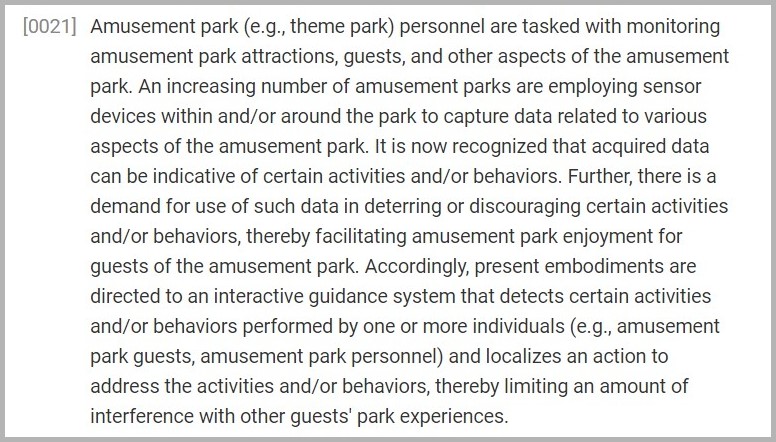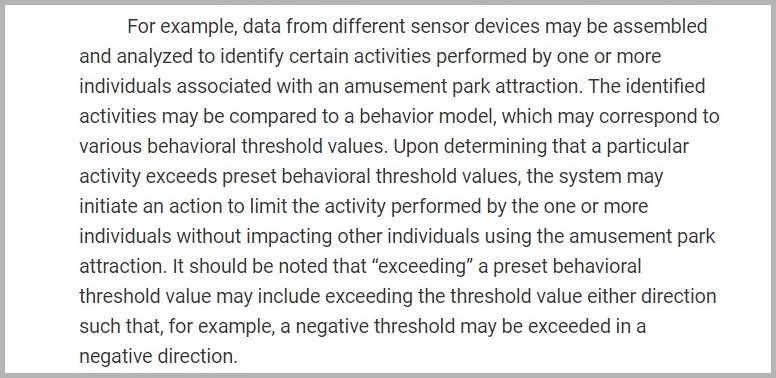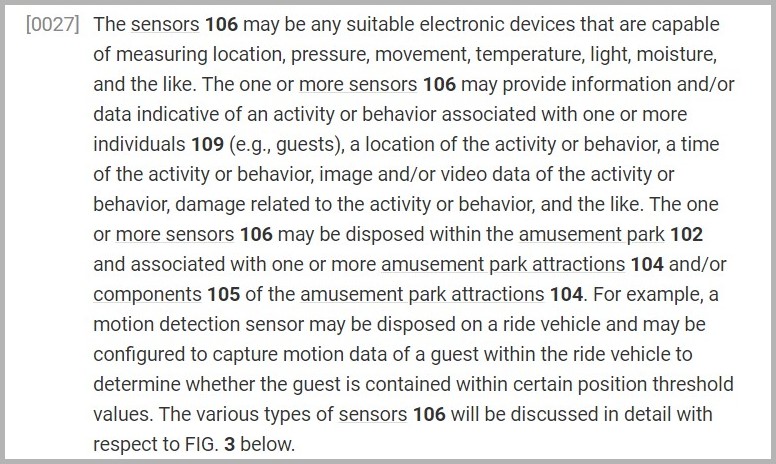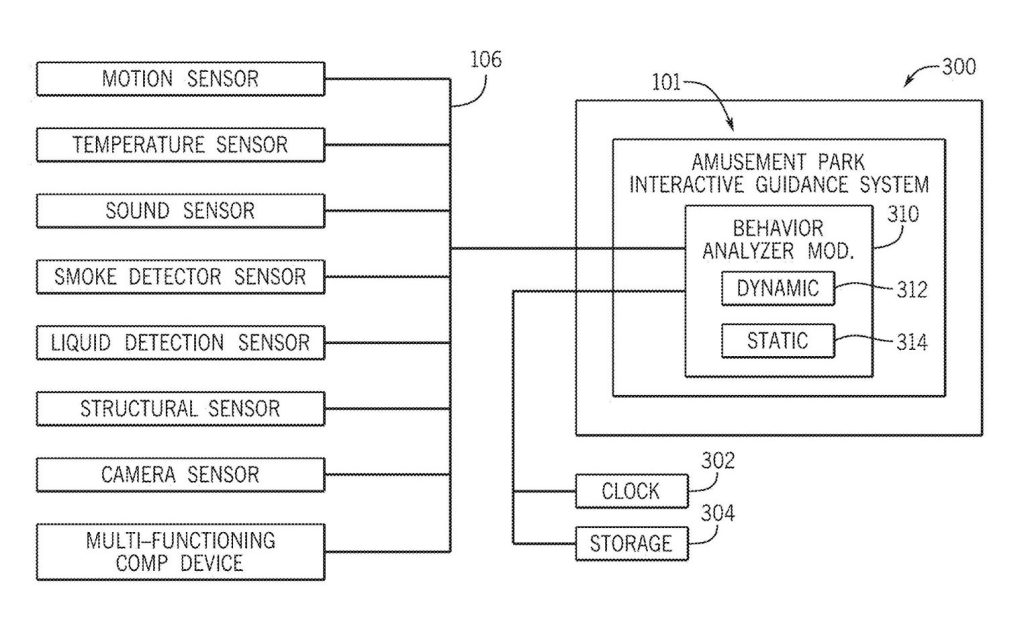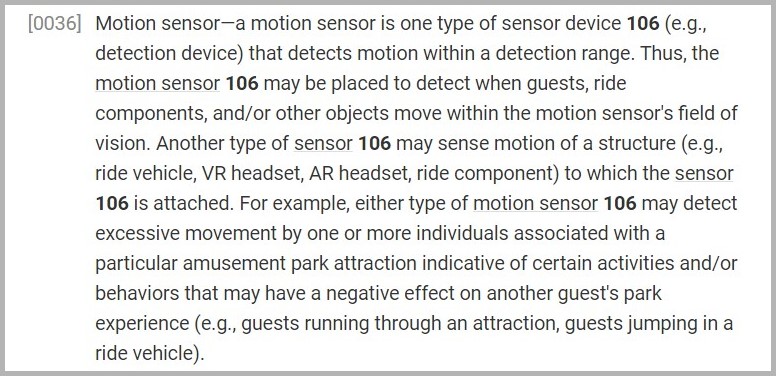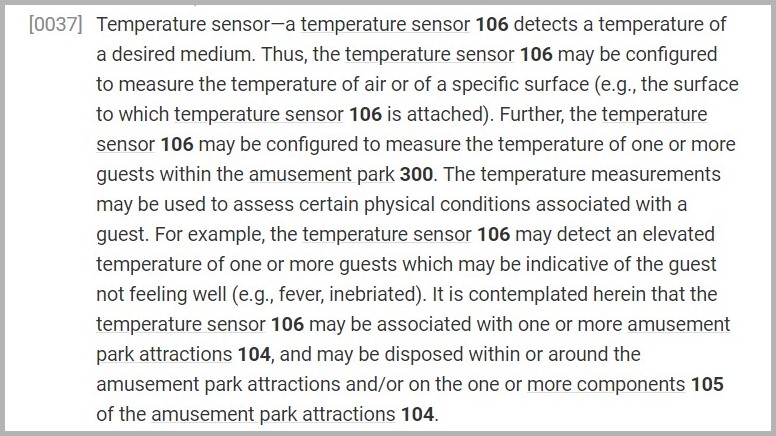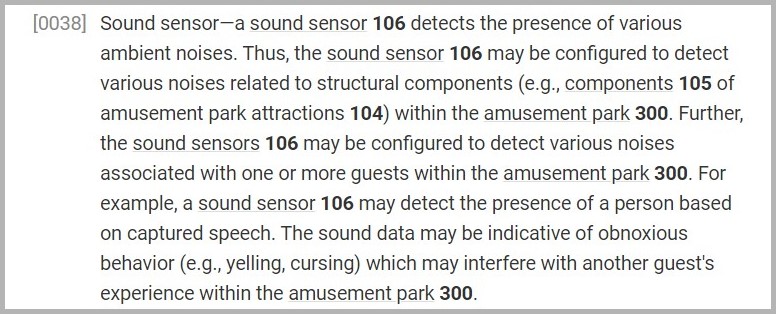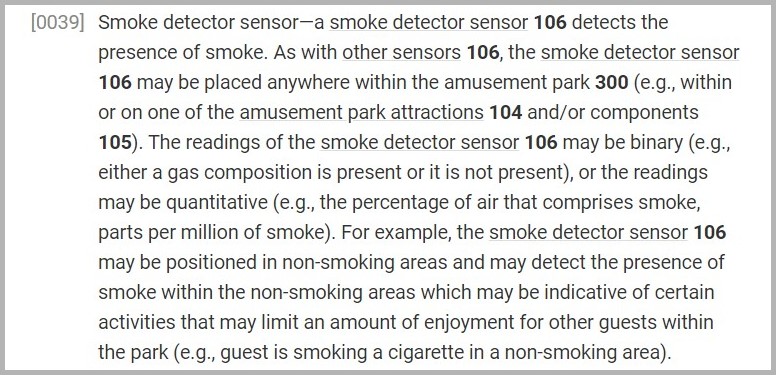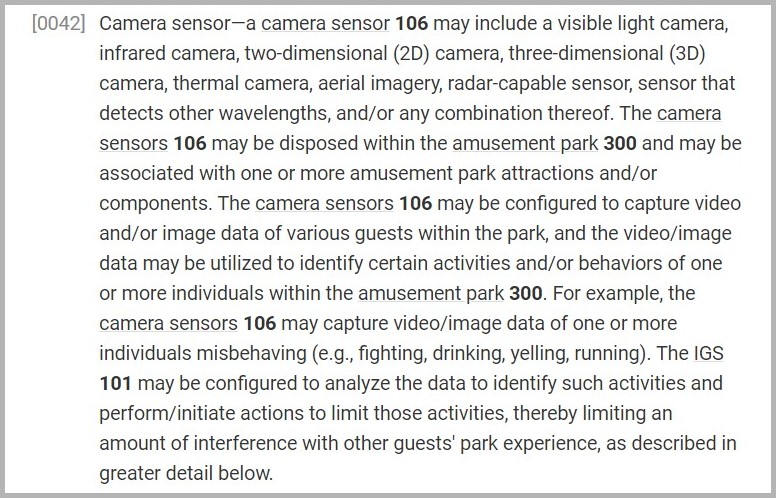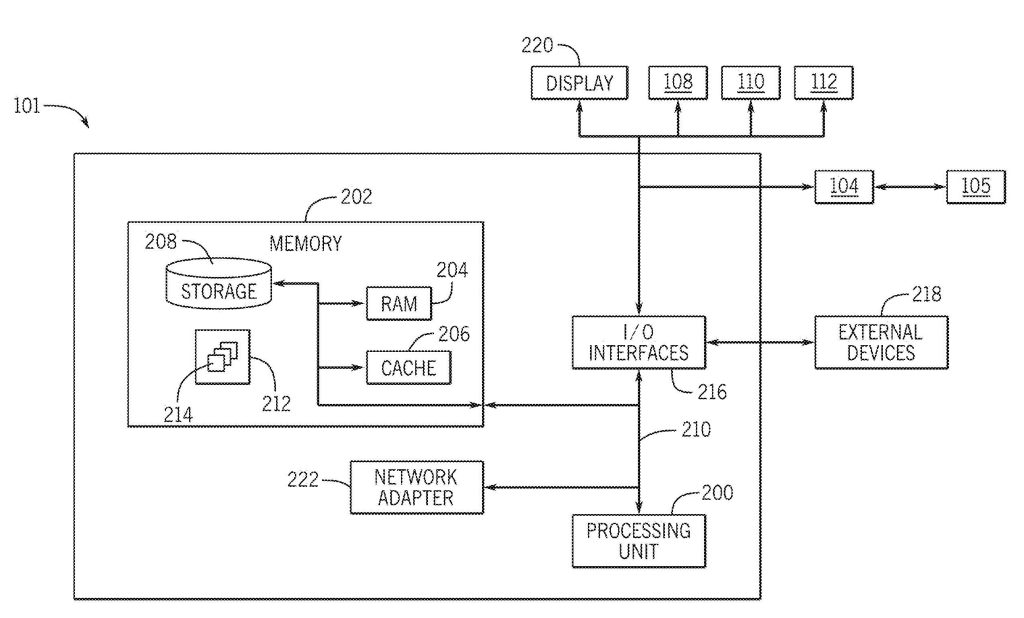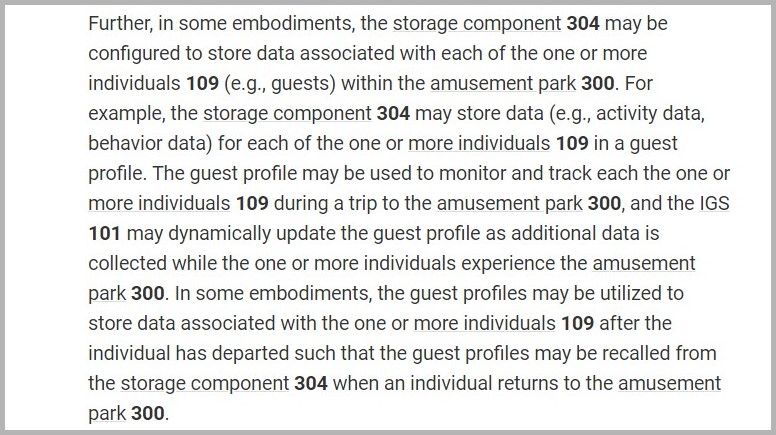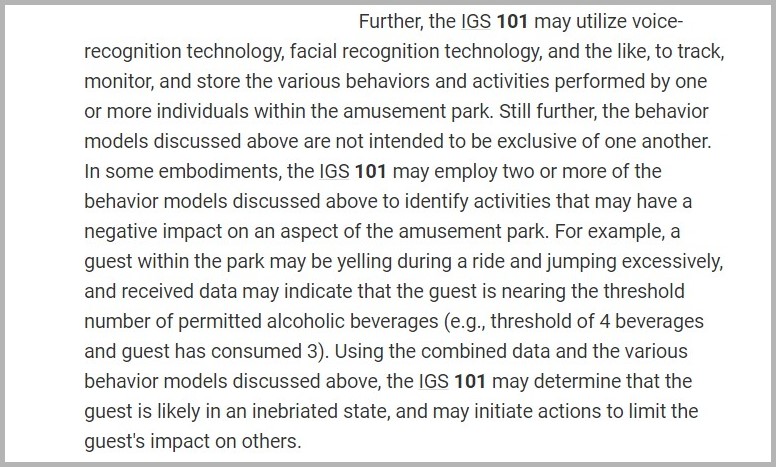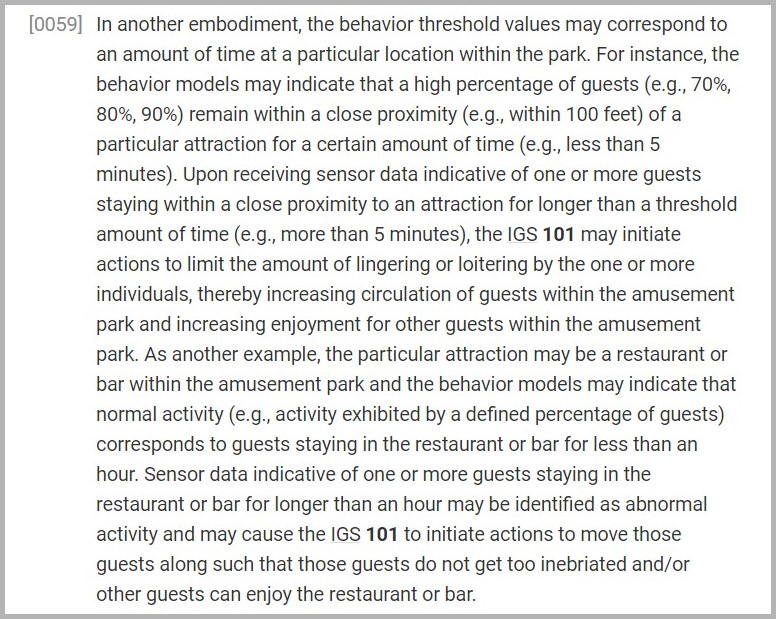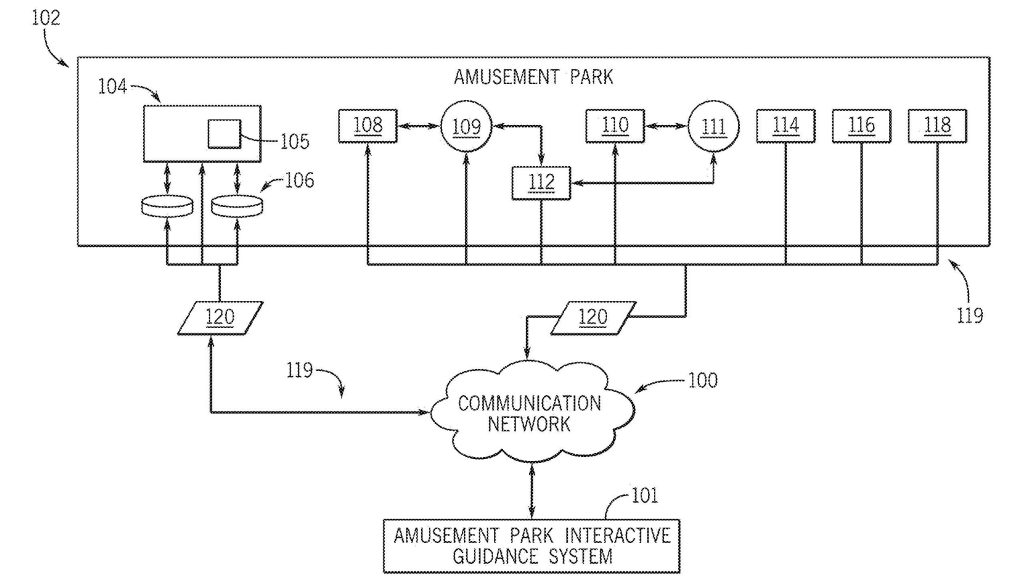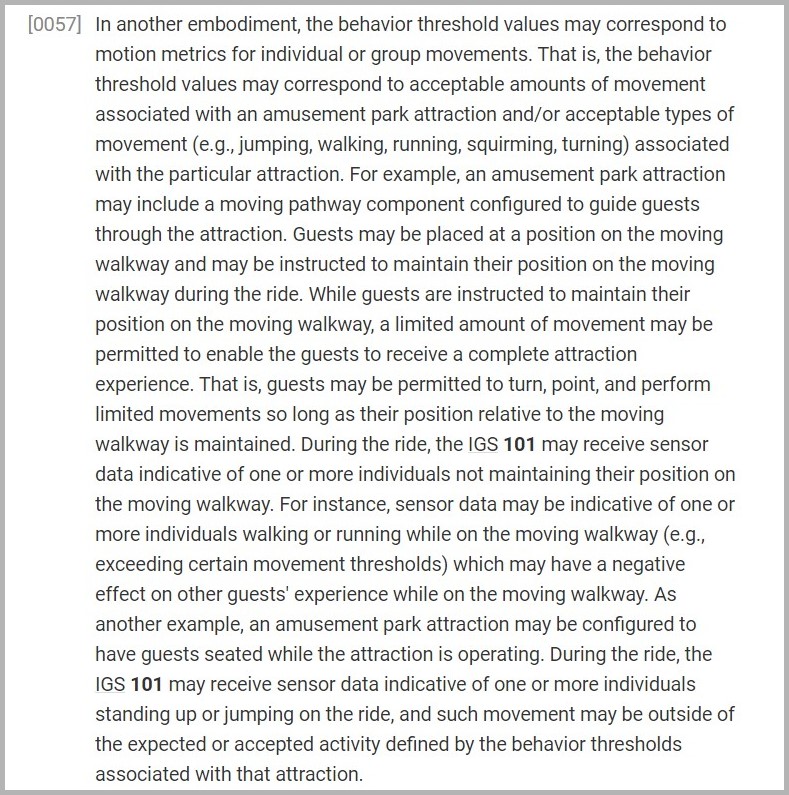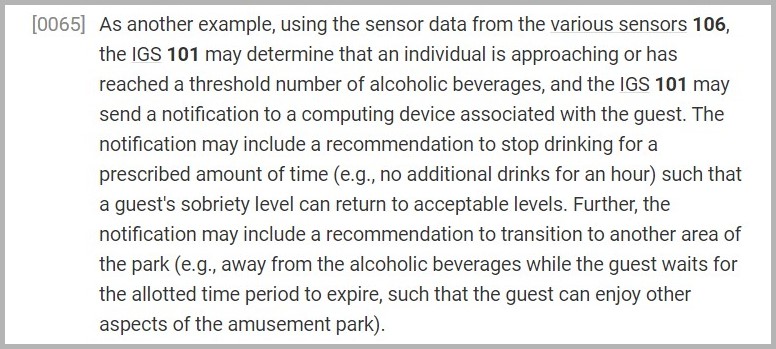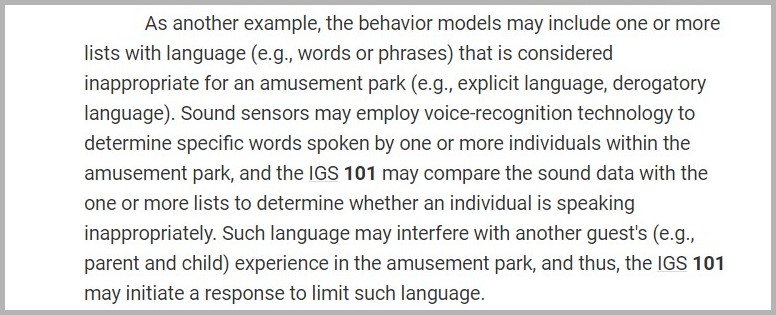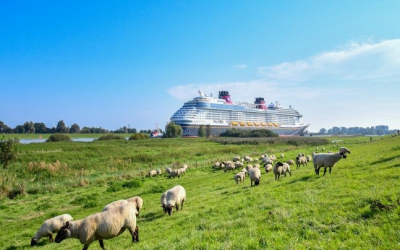Universal has filed a patent application for a technology that would place sensors around a theme park. These sensors could use machine learning to detect unruly guests and track rule-breakers, with the aim of improving the guest experience for others.
This possible technology would utilize many sensors that can detect motion, temperature, sound, smoke, liquid, and more to monitor park areas and rides for disruptive or dangerous behavior. The patent gives many examples including line jumping, disruptive actions by inebriated guests, smoking in non-smoking areas, getting out of moving ride vehicles, and more.
Technology Overview
In an application originally filed in 2022 with the United States Patent and Trademark Office and then updated recently this year, Universal has named the technology “Amusement park Interactive Guidance System.” The application is still pending and has not yet been granted a patent as of this writing.
In broad terms, the application describes the technology as “an amusement park monitoring system” comprised of “sensor devices configured to acquire data related to one or more individuals within an amusement park, a memory storing instructions, and a processor.”
The intention is to limit actions by certain guests that may negatively affect the enjoyment of the theme park for others. The excerpt from patent application below explains this concept in broad terms:
The technology would keep records of acceptable parameters for guest behavior, and when specific people are detected acting outside of these acceptable levels an action is taken. This could be accomplished by simple things like automatically warning the guests via a loudspeaker or more harsh punishments like expulsion from the park.
A simple example for how this detection system could be utilized in a theme park is to alert Team Members when a guest jumps off of a moving ride vehicle. Another example given includes a guest using a long object, like an umbrella, to reach outside of the safety envelope of a ride vehicle.
These actions could automatically cause a ride system to stop or alert a Team Member depending on the severity of the action.
Sensor Examples
Illustrations and explanations within the patent application discuss several types of sensors that could be placed around a theme park. Each of these sensors include at least one example of how it could be utilized within a theme park environment, and it’s these descriptions that paint a picture for how Universal would intend to use this possible system.
MOTION SENSOR – As explained in the example above, a motion sensor could help detect a guest moving on an attraction, or even jumping out of a ride vehicle, which could be dangerous for them or other riders.
TEMPERATURE SENSOR – A section in the document describing how a temperature sensor could be used gives us our first (of many) mention of how to detect inebriated guests.
SOUND SENSOR – A sound sensor could detect yelling, cursing, and other disruptions.
SMOKE DETECTOR SENSOR – A smoke detector sensor could catch guests smoking in non-smoking areas.
LIQUID DETECTOR SENSOR – A liquid sensor could detect spilled beverages on a ride.
CAMERA SENSOR – Cameras could detect specific motions like fighting, drinking, yelling, running, etc..
Guest Profiles and Tracking
Since this document is explaining how a new type of technology would work, part of it explains other components in addition to sensors. One of these components could be for the storage of data.
The example given explains how certain individuals could have a “guest profile” on file, which tracks and logs their actions during their visit to the park. This information could be used to determine whether it’s important to track their actions when they return to the park at a later date as well.
In other words, it sounds like the system could keep track of who it deems to be trouble-makers.
To make sense of the data, another component of the system may be “machine learning”. Now the document seems to go out of its way to not use the term “Artificial Intelligence,” but it seems that that is what is being described on how it could use learned patterns to determine what types of behavior are outside of normal parameters.
Combining data from multiple sensor types could help the system to determine specific scenarios, like whether or not a guest is too drunk to continue drinking. Automatically compiling data from facial recognition or cameras the system could count how many beverages a guest has consumed and cross-reference that with data collected by sound sensors that have detected disruptive yelling to “determine that the guest is likely in an inebriated state.”
Tracking a guest allows the system to keep track of how long they may remain in a specific area as well. This could determine if someone is loitering in front of an attraction, spending too much time in a restaurant, or hanging out in a bar too long—again, another factor in tracking whether someone is drinking too much at the park.
When Actions Could Be Taken
While a lot of the document talks about how to mitigate drunk and unruly guests, there are some simple practical applications that could be utilized for specific types of attractions as well.
One example seems tailor-made for the Villain-Con Minion Blast attraction at Universal Studios Florida. The document describes a situation where guests are expected to remain in place on a moving walkway attraction, but may run forward or move too far out of their designated area.
If these actions are detected, the system can automatically trigger an automated message over a speaker system, or even stop the ride automatically until the guests stop moving in a way that is interfering with other guests. Having witnessed it myself, this is a common problem on the Minion Blast shooting attraction, where Team Members must remind guests to stand in place during the ride multiple times.
While an automated message or even an automatic way to stop a ride for safety reasons seems like a simple usage for this technology, more complex guest behaviors may require a Team Member to step in to handle the disruption.
In one example, guests may be attempting to jump in line, or run in a queue. A possible consequence for these actions in the document is to send these guests back to the start of the line. Repeat offenders would be asked to leave the park or have other restrictions placed on their guest profile automatically by the system.
Guests who are determined to be too drunk for the system to consider them at “acceptable levels” may be locked out of purchasing or consuming additional alcoholic beverages until a specific amount of time passes.
In an age where park rules and regulation signs are being displayed more prominently explaining how harassment of employees or hate language will not be tolerated, this system could be configured to use sound sensors to detect specific words or phrases said by guests.
The document seems to describe a system that would help alleviate a lot of the manpower needed to monitor guests on rides and in the park on surveillance monitors, while also ensuring some negative behavior is not slipping through the cracks. It’s clearly not meant to replace security personnel or Team Members, but instead assist them in keeping disruptions to a minimum.
While most of us expect to be watched by cameras at all times while in the controlled environment of a theme park, the creation of guest profiles in a database where an algorithm adds new data automatically based on preset parameters may seem a bit alarming.
It is not known whether this system as described is in use at Universal theme parks, but individual technologies, like pressure mats to detect when someone gets out of a ride vehicle within a Disney park, have been in use for decades.
Subscribe to the news feed or enter your email address below to never miss an update. Patent Images & Excerpts: U.S. Patent & Trademark Office | Photos: Universal Destinations & Experiences | Other Images as Captioned




